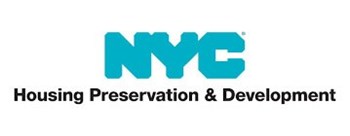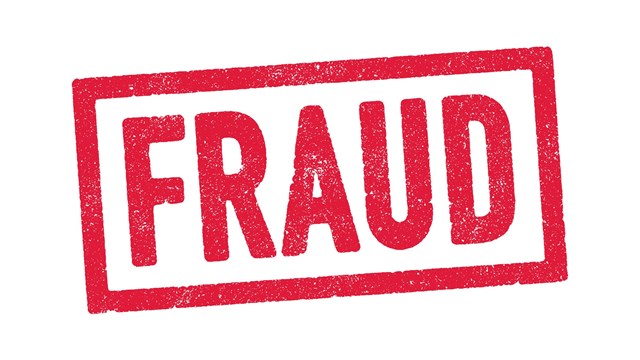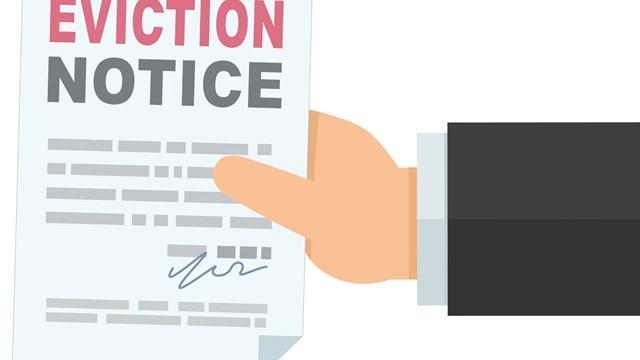
When most New Yorkers think of co-op apartment buildings, they have a vision of a stately old Park Avenue prewar residence; a shining, modern glass tower on the Hudson waterfront; or even maybe a quaint duplex in brownstone Brooklyn. But that’s not the whole picture. Co-op living crosses all socioeconomic levels. It has been a cornerstone of home ownership in New York City for lower- and middle-income residents, as well as the uppermost end of the luxury market. Co-op living has kept residents in New York City and stabilized neighborhoods that might otherwise have remained stagnant or even deteriorated.
Speaking in purely economic terms, few would dispute the miraculous rebirth of all of New York City’s five boroughs over the past 30 years. Today, it’s hard to find a ‘bad neighborhood’ in New York (and pretty much impossible, when it comes to Manhattan). Even places that were considered less than desirable only a few years ago are seeing the ongoing effects of a seemingly unrelenting boom in development and gentrification. As rents and prices continue to soar, dedicated lifelong New Yorkers seek out alternatives in less-developed neighborhoods, bringing the boom with them, for better or worse. But it certainly hasn’t always been that way.
The Bad Old Days
Back in the 1970s and 1980s, New York City was on the verge of bankruptcy, and residents were fleeing in droves. The Bronx was burning, and Brooklyn was a war zone. Upper Manhattan was known mainly as a drug supermarket.
With many rental landlords either substantially behind in real estate and water taxes or in outright foreclosure — or worse, having abandoned their buildings altogether — the city established a program to convert these properties to cooperative ownership, offering the tenants the opportunity to become owners. This program was established under Article XI of the New York State Private Housing Finance Law (PHFL) and the Business Corporation Law (BCL), which governs all co-op apartment corporations in New York.
Robert W. Snyder, an American studies professor at Rutgers University and the author of Crossing Broadway, a history and study of post-World War II Washington Heights in upper Manhattan, says of the HDFC program: “It is a policy that begins in the 1970s—the bleakest time in the economic history of New York City. What happened was that landlords were increasingly walking away from buildings, or not paying taxes. There was a crisis. The buildings were falling apart, so the city created a program whereby tenants could take over the building themselves. And this wasn’t a simple procedure. It happened in many neighborhoods.” He explained that the program was an early, if unexpected, part of the solution to the affordable housing problem in New York City. However, it was never intended as the sole solution.
The cost involved with building affordable housing is prohibitive in many respects. Broadly in effect at that time, New York City’s rent-control and rent-stabilization programs limited the ability of developers to build profitable projects. Financing costs were simply too high, and rents too heavily controlled. The grand projects that had produced the vast housing projects scattered around New York were considered failures in social planning and housing policy; yet the private sector couldn’t provide the housing necessary for middle-class and working-class New Yorkers. While the creation of HDFC co-ops gave a foothold to many New Yorkers who would otherwise not have the wherewithal and financial ability to obtain home ownership, the buildings they inherited were often in terrible physical and financial condition. Additionally, little help or training was offered by the city to get them back on track. The main consideration for the Department of Housing Preservation and Development (HPD), the Department of Finance (DOF), and the mayor’s office was to get these buildings off the foreclosure role, and to do that without becoming the landlord of last resort.
The HFDC Dilemma
With the creation of HDFC co-ops, the city created a class of owners who were, in many cases, stymied by both their agreements and their circumstances. Unfortunately many of these buildings today find themselves in foreclosure with the city over unpaid real estate and water taxes. Some have already lost their designation as cooperatives and been sold through third-party sale to real estate operators. Others are in danger of the same fate. When a foreclosure occurs, the cooperators lose their equity and become rent-stabilized renters again, wiping out years of ownership rights.
Glory Ann Hussey Kirstein, the chairperson of the HDFC Coalition Steering and Anti-Foreclosure Committees, has lived in a HDFC co-op on the Upper West Side of Manhattan for 36 years. “The problem is,” she says, “that a certain percentage of HDFCs are in arrears in taxes, and the city didn’t act on those arrears for many years.”
Among other issues, there is a problem with the notification system. “As far as we know,” says Kirstein, “the Department of Finance sends out quarterly invoices to all owners of residential properties. These invoices would contain information about past due amounts. There are issues as to whether the invoices were sent to the right individuals, addresses or persons.”
In many cases, the invoices were not sent to any of the actual residents in the properties. This may be a result of several factors, including that HPD never transferred the proper contact information to the Department of Finance when the properties were converted to begin with. Under normal circumstances, notices for co-op properties are sent to the property’s managing agent. In many cases, these properties don’t have managing agents. As acknowledged, many have had ongoing financial problems. Aside from tax arrearages, they may have been behind in payments to vendors. Many vendors — heating oil companies, for example — will file a lien against a property for non-payment of monies owed. In some documented cases, the oil company’s address became the address of record for the property due to their legal position against it, and the notice of unpaid taxes was sent to them. Clearly, the heating oil company wasn’t the ownership or management, and could care less about the unpaid tax invoice.
Kirstein points out, without apology, that the population base in many of these buildings had little or no business training or prior experience with homeownership, and mismanaged their properties. “This population base never got training on how to run a building or a business,” she says. Perhaps such training should have been included for the residents when the city shifted ownership to these tenants. Additionally, most of these buildings were turned over to the residents in terrible physical condition, and the urgent need for expenditures on repairs made the possibility of hiring a professional manager financially unfeasible.
“These buildings came from the worst neighborhoods, in the worst shape, from the worst landlords,” says Kirstein, “with an untrained population base that was untrained not only on how to run a home, but on how to run a whole building. The city just wanted to get rid of these buildings. They didn’t want to be in the landlord business. New York was hemorrhaging. They wanted to do this as fast as possible.”
The Current Situation
There are currently about 60 HDFC co-ops in foreclosure for lack of payment of real estate taxes and water bills with New York City. They are located primarily in Harlem and Washington Heights of upper Manhattan, the Bronx, and Bushwick and Williamsburg in Brooklyn — all neighborhoods, it should be noted, that have seen gentrification on a massive scale over the past decade. In the years between 1999 and 2016 under the Giuliani and Bloomberg mayoral administrations, and the first two years of the de Blasio administration, there were 96 HDFC foreclosures. In 2017 there were 84, almost as many as in the proceeding 17 years. The question is, why has the de Blasio administration and its Department of Finance so dramatically increased the pace of these foreclosures? (The Cooperator reached out to both the press offices of the mayor and the City Council for comment but has not received a response by the time of publication).
Home Ownership and Responsibility
To be fair, every real estate owner in New York — or anywhere for that matter — has an obligation to pay their real estate taxes and water bills in a timely fashion. HDFC co-ops aren’t exempt from that obligation due to their particular circumstances. Unfortunately for them, certain actions taken by the city made their situations much worse than perhaps they necessarily should have been. The ineffective notification of defaults on the part of the Department of Finance aside, to a great extent the burden of real estate and water taxes in many of these buildings is unfairly heavy on the co-op ownership.
Kirstein explains that at the time of the conversion of these buildings to co-op ownership, many of them contained vacant commercial space on their ground floors. The Department of Finance wrote long-term leases that were very favorable to commercial tenants to get the spaces leased. Though it is typical in commercial leasing for tenants to pay a portion of the real estate taxes, and/or real estate tax increases—known as a real estate tax pass-through—and to be separately metered for water usage, these commercial leases didn’t contain such language. Frequently, these tenants were laundromats, restaurants, and beauty parlors—all with very high levels of water use and rising real estate taxes. In many of these cases, unpaid water bills are the catalyst for the in-rem foreclosure action that ultimately leads to the collapse of the co-op and its foreclosure.
The View From the Bridge
Stuart Halper, Vice President of Impact Management, which has offices throughout the New York area, manages several successful HDFC properties. He believes in many cases the problems affecting some HDFC co-ops began when they converted. “Many of the buildings had remaining renters,” Halper says. “If those renters were there at the time of conversion, they were allowed to remain, as in any conversion plan. Many had empty apartments which the co-op couldn’t sell. There was no market for them at that time, so they rented them. There were huge arrears on taxes and water bills. In many cases it started out as a sinking ship. The problems were so deep they couldn’t afford to pay a managing agent.”
Halper believes that the biggest underlying issue facing many of these buildings is collections of monthly maintenance and rent. He recommends that as a managing agent he would bring in a competent attorney to get the co-op into landlord-tenant court to clean up the arrearage problem. Adequate and timely monthly collections of both maintenance from cooperators and rent from tenants would provide the strong financial foundation these co-ops need to solve their other problems.
Kirstein has been down this path. Her building had to get under financial control, which required raising maintenance by 40 percent in 2013 because it was running behind in taxes. The best way to achieve tight financial control, a critical factor in any healthy co-op, is to get competent management into the building. A cost for sure, but one that will pay for itself many times over.
Battling Bureaucracy
The bureaucracy of New York can seem monolithic. HDFC co-ops suffering from this problem have to deal with three agencies simultaneously: the HDFC, the HPD, and the DOF. It’s a labyrinth so confusing that many would simply give up.
“This is a land grab, plain and simple,” says David Eisenbach, a history professor at Columbia University who is running for the office of New York City Public Advocate. “There should be an attempt to work this out. It’s symptomatic of this administration that has handed itself over to the real estate industry. As Public Advocate, I would immediately issue a press release and hold a press conference to raise public awareness of this issue. The public in turn will then put pressure on the city council and mayor’s office to change the policy. The Office of the Advocate should look into this matter and be a defender of these owners.”
Many questions and issues remain, of course. In future articles on www.cooperator.com, we will examine the process by which these co-ops must defend themselves to remain as owners in their buildings; what the term “success” means for a HDFC co-op; and what other regulations control the circumstances in these buildings, including flip taxes, limits on sales prices, and income restrictions.
A.J. Sidransky is a staff writer/reporter for The Cooperator, and a published novelist.






Comments
Leave a Comment